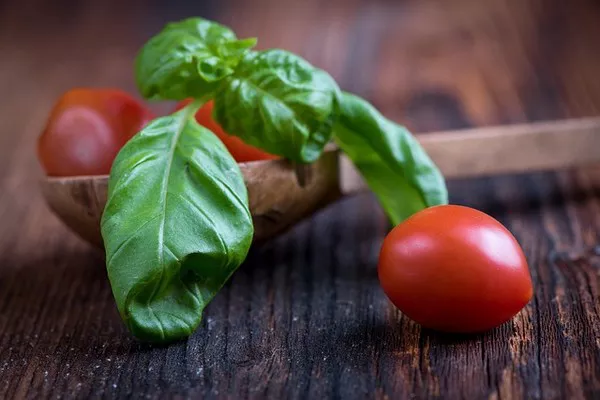Tomato plants are cherished for their delectable fruits that adorn our gardens and plates with vibrant colors and robust flavors. However, the absence of flowers on these plants can be a source of concern for many gardeners, prompting the question: “Why are my tomato plants not flowering?” This article delves into the factors that can hinder the blossoming of tomato plants and offers insights into remedying the situation.
Crucial Role of Flowers in Tomato Plants: The Prequel to Fruition
Before delving into the intricacies of non-flowering tomato plants, it’s essential to grasp the pivotal role flowers play in the tomato’s life cycle. Tomato flowers serve as the precursors to fruit formation. The intricate process of pollination, facilitated by these blossoms, lays the foundation for the bountiful harvest that follows. A lack of flowers ultimately translates to the absence of fruits, leaving gardeners eager for solutions.
See Also: Enhancing Tomato Plant Growth Through Topping Techniques
Culprit 1: Improper Light Conditions
Sunlight is a lifeline for plants, and tomatoes are no exception. Inadequate exposure to sunlight can dampen a tomato plant’s ability to produce flowers. Tomatoes thrive in full sunlight, typically requiring at least 6-8 hours of direct sunlight daily. Insufficient light can disrupt the plant’s internal clock, inhibiting its transition from the vegetative phase to the flowering stage.
Solution:
Ensure your tomato plants are positioned in a location that receives ample sunlight. If cultivating indoors, consider employing grow lights to supplement natural sunlight and maintain an optimal light duration.
Culprit 2: Nutrient Imbalance
A balanced diet is as crucial for plants as it is for humans. A lack of essential nutrients, particularly phosphorus, can hinder flower formation. Phosphorus plays a pivotal role in flower initiation and development. An imbalance in soil nutrients, marked by an excess of nitrogen, can lead to excessive foliage growth at the expense of flowering.
Solution:
Prioritize the application of a balanced fertilizer, ensuring it contains a suitable phosphorus content. Regular soil testing can guide nutrient management, helping you maintain an optimal nutrient balance.
Culprit 3: Extreme Temperatures
Temperature fluctuations can significantly impact a tomato plant’s ability to produce flowers. Excessive heat, especially during the day, can deter flowering, while chilly nights can cause flower drop. Tomatoes thrive in temperatures ranging from 70°F to 85°F (21°C to 29°C) during the day and no lower than 55°F (13°C) at night.
Solution: Shield plants from extreme temperature conditions by providing shade during scorching heat and considering protective covers or cloths to trap heat during cold nights.
Culprit 4: Improper Pruning
Pruning can be both beneficial and detrimental to tomato plants, depending on the extent and timing. Excessive pruning, especially when carried out at the wrong time, can delay flowering. Pruning during the flowering stage may disrupt the plant’s energy allocation, hindering flower formation.
Solution:
Adhere to appropriate pruning practices, focusing on removing excessive foliage and side shoots during the vegetative phase while avoiding aggressive pruning during flowering.
Culprit 5: Insufficient Pollinators
Tomatoes, like many plants, rely on pollinators to facilitate the transfer of pollen between flowers, enabling fertilization. Without pollination, flower development remains stymied.
Solution:
Encourage pollinators like bees and butterflies to frequent your garden by planting flowers that attract them. If necessary, consider hand pollination using a small brush to transfer pollen from flower to flower.
Culprit 6: Inadequate Watering
Water is the elixir of plant life, and maintaining consistent moisture levels is crucial for flowering. Inconsistent watering, whether too little or too much, can adversely affect flower formation.
Solution:
Establish a consistent watering schedule, ensuring the soil remains evenly moist but not waterlogged. Mulching can help retain moisture and regulate soil temperature.
Culprit 7: Overcrowding and Spacing
Crowded plants can inadvertently impede air circulation and sunlight penetration, thereby hampering flower development. Insufficient spacing can create a competitive environment for resources, stunting growth.
Solution:
Provide ample spacing between tomato plants, facilitating optimal air circulation and light exposure. Pruning excess foliage can also enhance air circulation.
Culprit 8: Environmental Stress
Stressors like diseases, pests, and environmental shocks can divert a plant’s energy away from flower production as it prioritizes survival.
Solution: Implement vigilant pest and disease management practices to minimize stressors. Employ preventive measures and promptly address any issues that arise.
In conclusion
the absence of flowers on tomato plants can be attributed to a n array of factors. From inadequate light exposure and nutrient imbalances to temperature fluctuations and improper practices, each culprit can impact a tomato plant’s journey towards a bountiful harvest. However, armed with knowledge and tailored solutions, gardeners can navigate these challenges and usher their tomato plants into a flourishing phase of growth, flowering, and eventual fruit-bearing.


